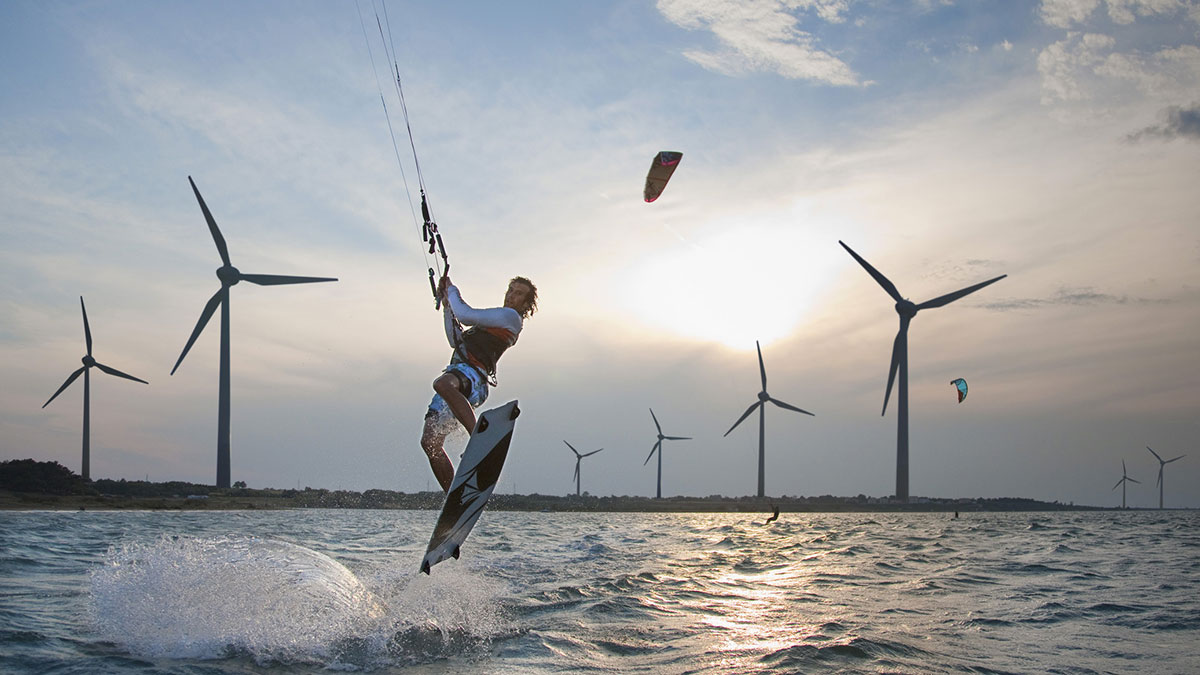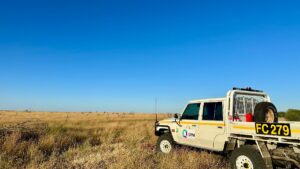QEM’s Julia Creek Project set to ride the renewable energy wave in Queensland

The project looks to benefit from the QLD State Government’s CopperString renewable energy expansion plans. Pic via Getty Images.
QEM looks set to power its Julia Creek vanadium and oil shale project with renewable energy after the Queensland Government announced a major purchase.
The deal will see the Queensland government spend $5bn to buy and upgrade the CopperString 2.0 project to connect the North West Minerals Province – where Julia Creek is located – with the national energy grid near Townsville.
The expanded CopperString 1,100km transmission line will connect with what the Australian Energy Market Operator (AEMO) calls the “best co-located wind and solar resources in Eastern Australia,” providing affordable, renewable energy to the region.
And QEM Limited’s (ASX:QEM) plans to be an off-taker, accessing renewable energy to power its Julia Creek operations cleanly via a proposed hybrid solar and wind farm with generation capacity of up to 1GW.
Already meteorological and solar monitoring instruments are transmitting data in real time which supports the wind and solar modelling developed in QEM’s 2021 Pre-Feasibility Study completed by engineering firm GHD.
Affordable, renewable energy for Julia Creek
The Julia Creek project is a unique world class resource with a best estimate (2C) Contingent Resource of 79 million barrels of oil (along with a less certain high estimate – 3C – resource of 696MMbbl) and a Mineral Resource of 2,850Mt grading 0.31% vanadium pentoxide, with 360Mt now in the Indicated Category.
“Access to affordable, reliable and renewable energy has been a key development pillar for QEM along with access to this resource,” MD Gavin Loyden said.
“CopperString will harness the wind and solar resource along the corridor and provide the reliable and affordable access to electricity to develop and process the critical minerals in the North West Minerals Province.”
Early works for the $5B CopperString project will begin this year with construction planned for commencement next year.

VRFBs from waste product
QEM has also recently signed an agreement with Sun Metals Corporation (SMC) for the supply of vanadium-bearing spent catalyst from SMC’s Townsville operations.
The five-year agreement (including provision for a five-year extension) means the company can obtain spent catalyst from Sun Metal’s zinc refinery in Townsville to process using standard, tested methods to extract high grade vanadium pentoxide with greater than 99% purity.
Notably, that’s the grade required for QEM to produce electrolyte for vanadium redox flow batteries (VFRB), at the $75m Queensland Resources Common User Facility (QR-CUF) in Townsville – which is expected to be completed in 2025.
Circular economy for Queensland
Loyden said it’s a circular economy opportunity to upcycle Queensland industrial waste to battery grade vanadium pentoxide, with VRFBs used in large scale, battery storage systems that store excess power from the grid for use during peak demand periods.
“Spent catalyst recycling is an environmentally beneficial solution, without which valuable metals like vanadium may be lost,” he said.
Not to mention, the batteries use vanadium-ions in the electrolyte solutions and are considered safer, more scalable, and longer lasting than their lithium counterparts with a lifespan of more than 20 years.
This article was developed in collaboration with QEM Limited, a Stockhead advertiser at the time of publishing.
This article does not constitute financial product advice. You should consider obtaining independent advice before making any financial decisions.
Related Topics
UNLOCK INSIGHTS
Discover the untold stories of emerging ASX stocks.
Daily news and expert analysis, it's free to subscribe.
By proceeding, you confirm you understand that we handle personal information in accordance with our Privacy Policy.








